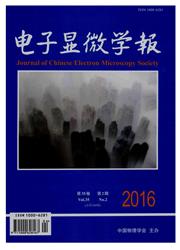

 中文摘要:
中文摘要:
扫描离子电导显微镜(scanning ion conductance microscopy,SICM)是一种非接触式的扫描探针显微技术(scanning probe microscopy,SPM),可以实现生物样品在近生理条件下的成像。随着技术发展,目前广泛应用于生物医学领域的SICM主要包括两种:跳跃式离子电导显微技术(hopping probe ion conductance microscopy,HPICM)和外加压力模式的SICM。前者可以应用于软的、黏的、对外力或其它机械信号敏感的样品的高分辨成像;后者可以通过探针微管对样品局部施加外力刺激或化学、电学、光学或生物分子等信号,实现对样品动力学性质或相关生理过程局部的原位研究。此外,SICM技术具有良好的开放性,能够越来越多地与其它技术手段联用,极大地丰富了其在生物医学领域的应用,可用于疾病发病机理、药物作用以及临床诊断等的研究。但是,目前SICM时间分辨率较低,这制约了它在生物体系动力学行为方面的研究。
 英文摘要:
英文摘要:
Scanning ion conductance microscopy(SICM),which allows studying of cell structure and function at nanometer scale in physiological environment,has been developed to be a multifunctional toolkit in nanobiology and nanomedicine. There are two major SICM modes: hopping probe ion conductance microscopy(HPICM) and SICM with a localized external pressure jet against the sample surface. Besides nanoscale-imaging of cell membrane topography,dynamic properties can be characterized on living cells. This article briefly reviews the principles of SICM and its applications in nanobiology and nanomedicine. The combination of SICM with other nanotechniques is also discussed. Studies by SICM on cells offer a new approach to the understanding of cell function,disease mechanism for development of drug as well as new strategies for clinical diagnosis.
 同期刊论文项目
同期刊论文项目
 同项目期刊论文
同项目期刊论文
 期刊信息
期刊信息
